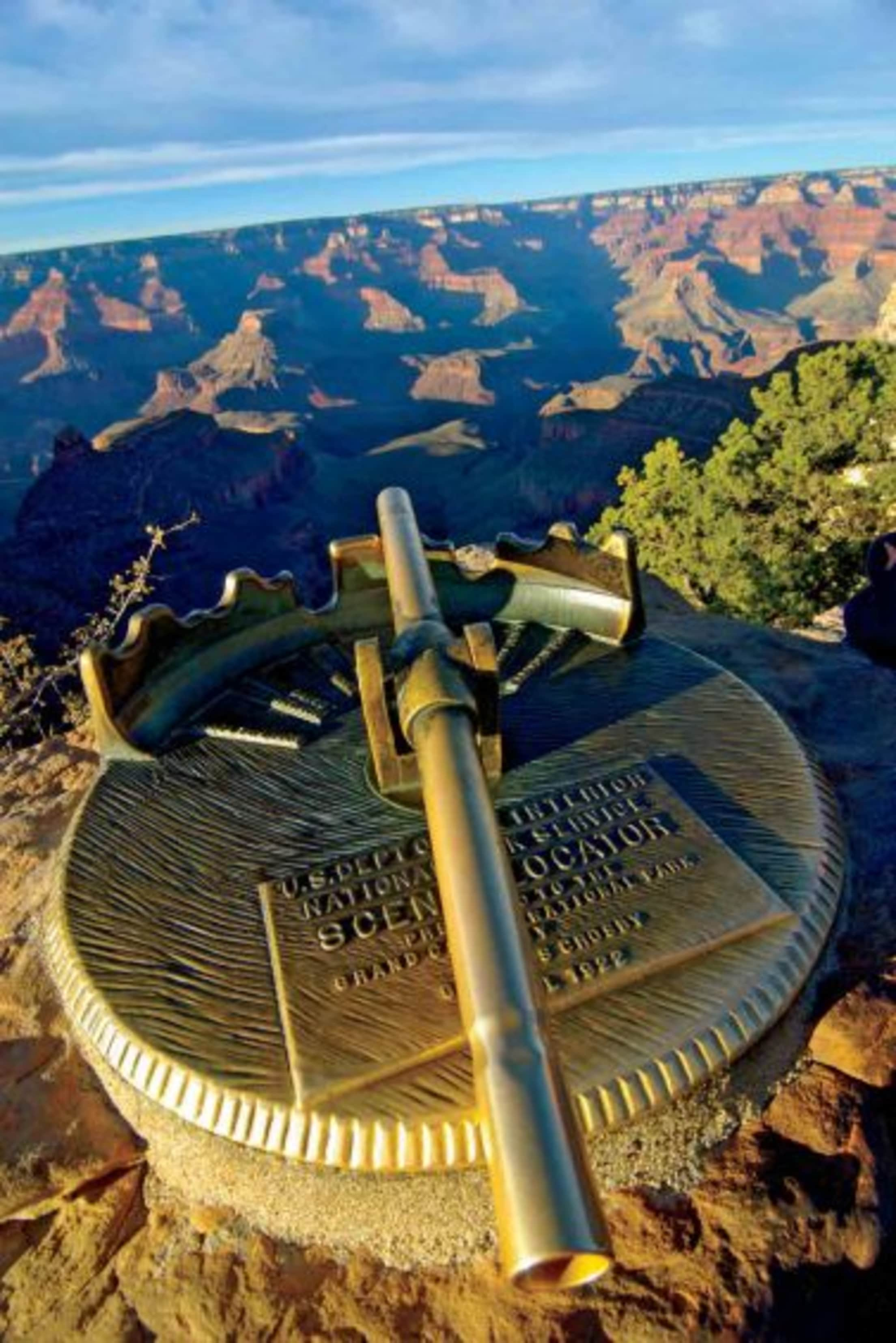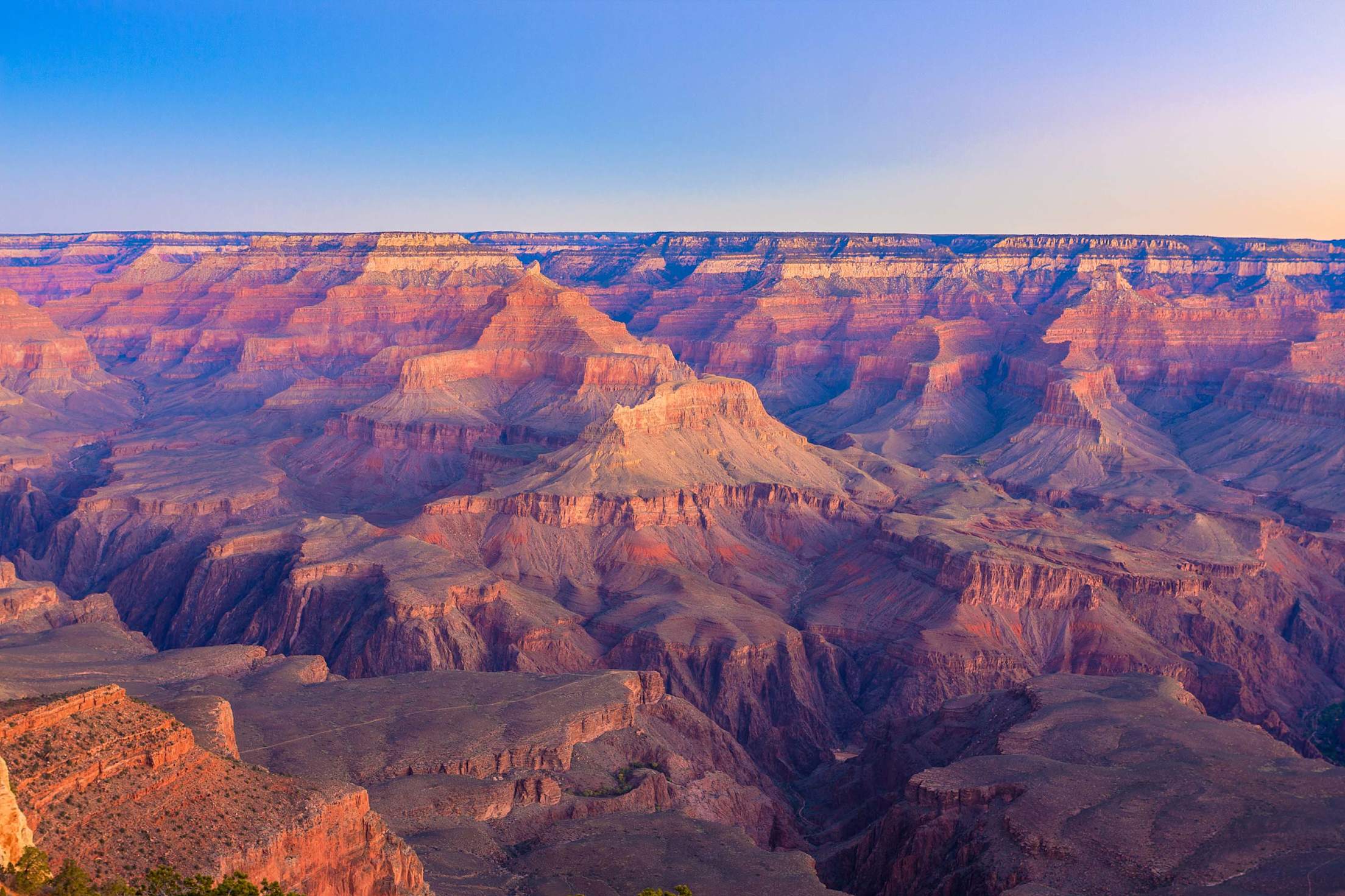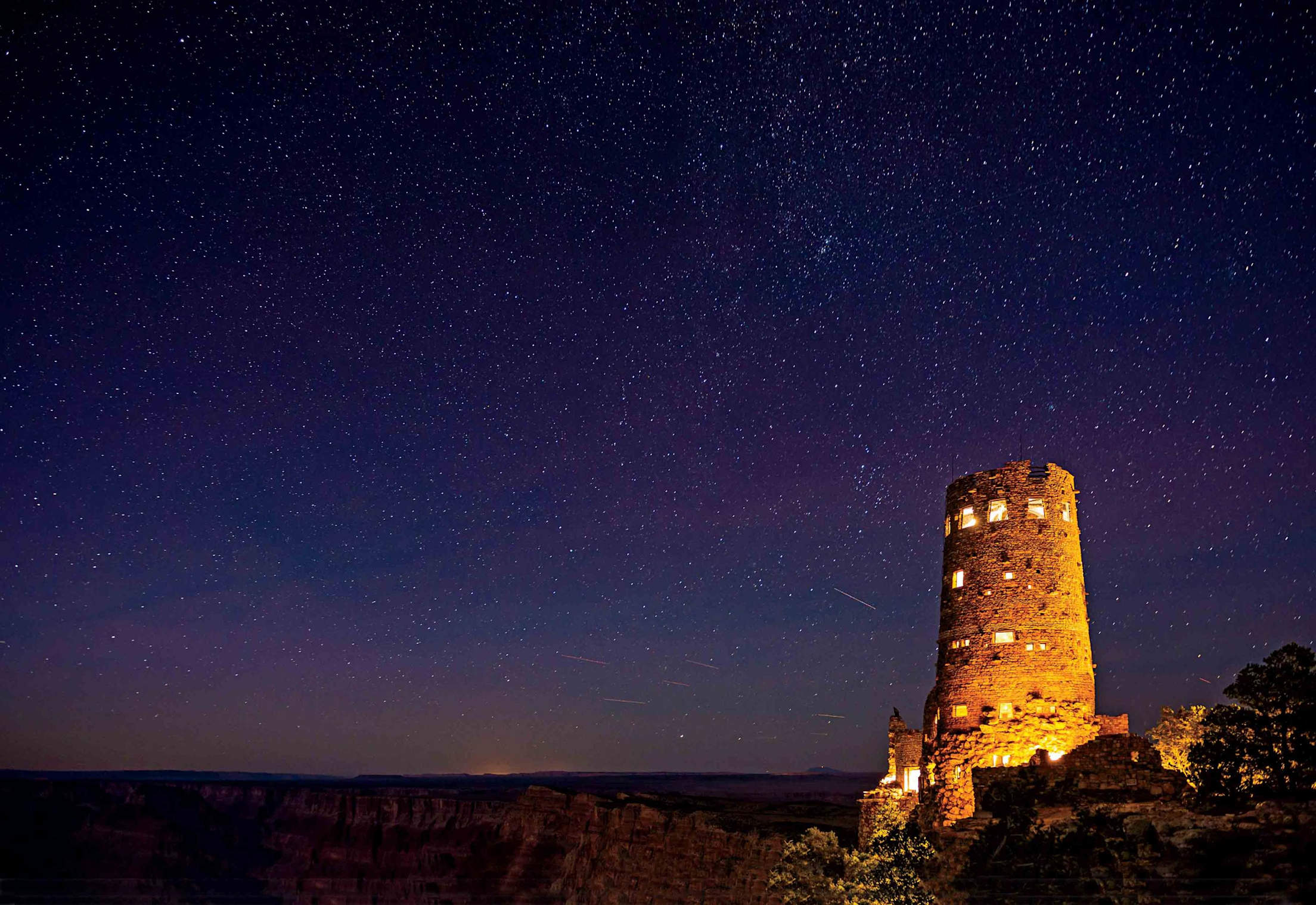
Top Things to Do at the Grand Canyon
There are amazing views by day, but be sure to stay for the night sky.

In National Lampoon's Vacation, a screwball film about a family road trip, a harried father arrives at the South Rim of the Grand Canyon, gazes at the spectacle for an eyeblink, mutters a few appreciative words, then hurries his wife and kids back into the car. Each year, nearly 5 million people make their way to this great tear in the earth, 90 percent of them seeking the amenity-rich South Rim, an easy drive from Flagstaff, Arizona. Yet many stay for just part of a day.
They miss the sight of the sunrise setting the gorge aflame, the night sky spread like an inky blanket streaked with shooting stars. They pass up a mule ride through a piñon forest, a bike ride to a postcard-worthy promontory, or a stroll to a lookout where the land falls away and jaws drop, too. One mile deep and 277 miles long, the Grand Canyon is vast enough for a lifetime of exploration. But it also pays back richly on a far smaller investment.
“It’s amazing what a few extra hours will get you,” says park docent Sharon Cawley. “We’re a 24-7 show.”

That show has been running for a long, long time. While some geologists think the canyon started taking shape as long as 70 million years ago, the rocks themselves date back much further, as you learn on the Trail of Time, a 1.3-mile bluff-top walk that starts near Grand Canyon Village. The path is marked by polished blocks of Vishnu schist, ruby gabbro, and other treasures from the canyon walls, all placed in sequence as you’d see them in a crawl up from the depths. Among the displays are pieces of 800-million-year-old fossil reef, relics of the era when this wondrous landscape lay beneath a sea.
Following the Trail of Time to its east end, you wind up at the Yavapai Geology Museum, where windows offer arresting views of the stacks of multihued ancient rock. Scale models, photos, and maps illuminate the canyon’s origin story, especially the role the Colorado River played in sculpting the chasm.
Seeing the canyon intimately means a daylong hike down, with no shortcuts. Or there is Grand Canyon: A Journey of Wonder, a free film that screens all day at the visitor center. The 20-minute documentary, filled with swooping shots of cliffs and spires and rapids, brings you into the canyon’s mysterious crannies.

Although the canyon is 277 river miles long, its beauty is immeasurable.
You’ll find plenty to see and do up top. Miles of paved paths make smooth routes for bikes, available for rent at the visitor center. Then there are the mules, the park’s most famous rides. A long stint in the saddle is not required. Mule caravans carry sightseers on overnight trips into the canyon, but the sure-footed animals also clip-clop daily on two-hour guided tours along the rim.
Check in for your reserved mule ride at Bright Angel Lodge in Grand Canyon Village. Established in the early 1900s, when the Santa Fe Railway reached the rim, the village remains a hub serving cars, buses, and also a train—the daily Grand Canyon Railway from Williams, Arizona, 65 miles away.
Many original buildings still stand. They include El Tovar, an ornate hotel reminiscent of a Swiss chalet, and the hewed-stone Hopi House, designed by architect Mary Colter to resemble a Hopi pueblo. Completed in 1905, it became a busy market for American Indian art. With its spread of sandpaintings, dream catchers, and handwoven baskets, it serves the same purpose today.
Hopi, Navajo, and nine other Native peoples all have ancestral land in or around the canyon. Many of their cultural heritage sites are off-limits, but not the Tusayan Ruin, where evidence of an 800-year-old tribal structure endures in the stone remnants of living quarters, a storage room, and a kiva, or prayer room.
The ruins stand half an hour east of Grand Canyon Village along Desert View Drive, a road tough to drive because it so often tempts you to stop. Shoshone Point, one of the park’s sleeper hits, lies off the highway 3.5 miles east of the village (between mileposts 244 and 245), where a gentle one-mile walk leads out to a rocky perch and a panorama that’s easy to admire but hard to believe.

The Desert View Watchtower glows against the Arizona sky.
The same is true all around the park from the moment the sun rises, casting gold dust across the canyon, until the time it sets and dusky shadows creep in.
“We like to say that half the park is after dark,” says Rader Lane, a ranger who leads stargazing walks and talks two to three times a week, spring through fall.
The night sky above the canyon, unpolluted by city light, is one of the continent’s darkest and a backdrop for astral spectacles of astounding depth and detail. In clear weather, the Milky Way takes on three dimensions, its constellations morphing into celestial mobiles. Flooded with a full moon’s light, the canyon appears in ghostly relief, a spectral image that lingers until the sun awakens and the daytime show begins again.